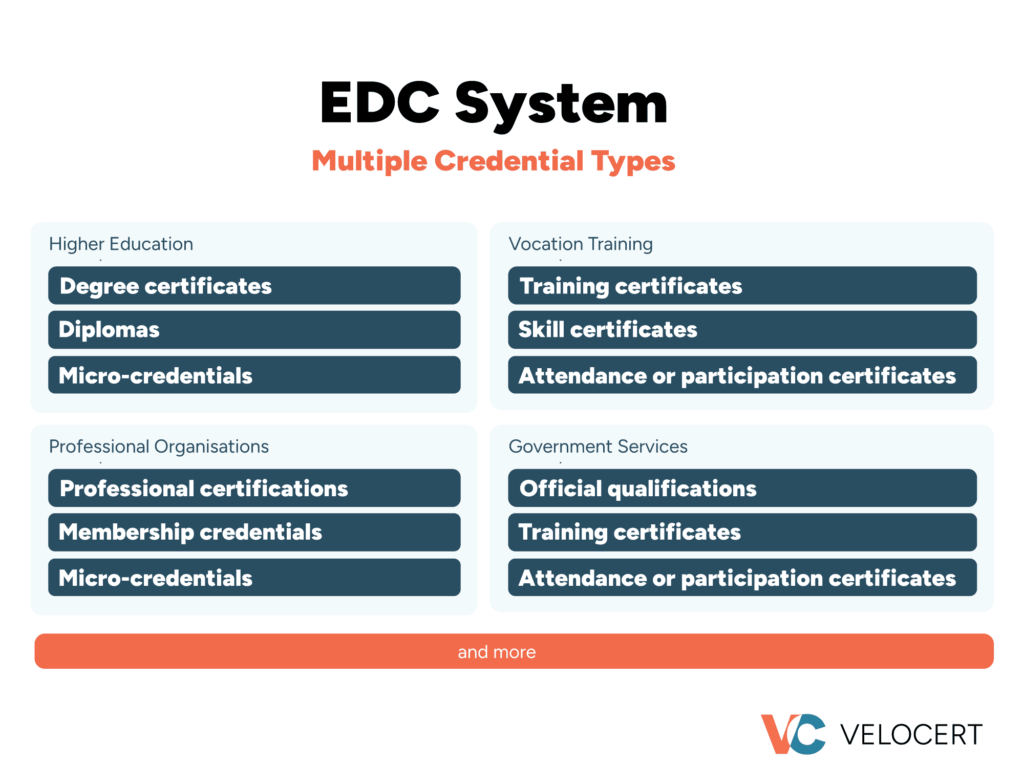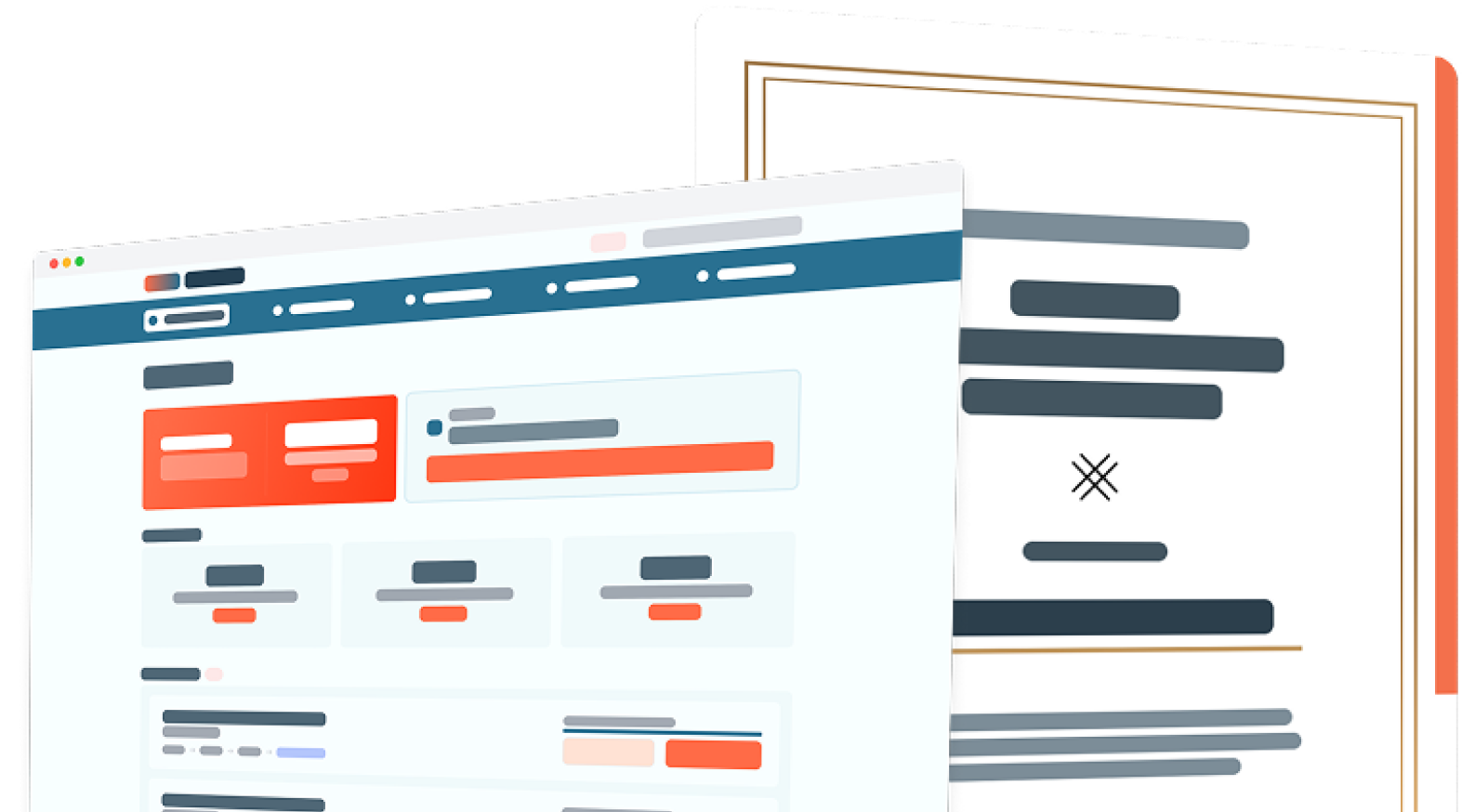The future of credentialing is here, and it’s transforming how we prove, share, and verify learning achievements across Europe.
Picture this: you’ve just completed a master’s degree in Germany, and you’re applying for a job in Spain. Instead of posting certified copies of your diploma and waiting weeks for verification, you simply share a secure digital link. Your potential employer instantly verifies your qualification’s authenticity, sees your grades, and confirms the accreditation status of your university—all in seconds. That’s what’s happening right now with European Digital Credentials for Learning (EDCs).
What Exactly Are European Digital Credentials?
An EDC is far more than a digital version of a paper certificate. It’s an advanced, standardised way to record detailed information about what someone has learned. It follows European guidelines for organising educational information and uses encryption technology to keep the records secure and authentic.¹ (1)
Every EDC contains three essential layers:
- The Visual Layer: What you see when viewing the credential.
- The Metadata Layer: Rich information about the learning experience.
- The Security Layer: An electronic seal that ensures the credential’s authenticity and detects any tampering attempts, backed by eIDAS-compliant cryptographic standards.²

The Legal Foundation: eIDAS and European Recognition
The European Union’s eIDAS regulation provides the legal framework for electronic identification and trust services across EU member states. When educational institutions use qualified electronic seals that comply with eIDAS standards, these digital credentials gain enhanced legal recognition and can work seamlessly across borders.
For EDCs, this means that credentials digitally sealed by approved service providers under eIDAS can be automatically recognised and trusted across all EU member states³ This removes traditional bureaucratic barriers and creates a standardised approach to checking digital credentials, supporting European mobility for education and employment. However, the level of automatic recognition depends on whether the issuing institution uses eIDAS-approved trust services rather than standard digital signatures.
The Technical Innovation: Built on Open Standards
EDCs are built on the W3C Verifiable Credentials standard, expressed in JSON-LD format, making them interoperable with international credentialing systems.⁴ This technical foundation ensures that EDCs can:
- Be stored in digital wallets alongside other credentials
- Be shared securely through customisable links
- Be automatically verified by any compliant system
- Be preserved long-term without degradation
The European Learning Model provides the semantic framework, offering over 480 properties to describe learning in unprecedented detail.⁵ This rich data model enables precise skills matching and supports the development of AI-powered career guidance systems.
Real-World Applications
EDCs enable secure, verifiable credentialing across various sectors.

The Verification Advantage
Traditional credential verification is time-consuming and expensive. Employers often wait weeks for confirmation, whilst verification services charge significant fees. EDCs eliminate these friction points by removing the need to contact third parties for verification – the system does it automatically.⁶
Every time someone views an EDC, the system automatically:
- Confirms the issuing institution’s identity
- Verifies the credential hasn’t been tampered with
- Checks the electronic seal’s validity
- Displays the current accreditation status
This real-time verification builds trust whilst reducing administrative burden for all parties involved.There’s no need to phone universities, send emails to verification services, or wait for postal confirmations – the technology handles verification instantly and independently.
Privacy and Data Control
EDCs put learners in control of their data. Unlike centralised systems where institutions hold all records, EDCs can be stored in personal digital wallets, giving individuals complete control over when and how their credentials are shared.⁷
Share links can be customised with expiration dates and view limits.. This granular privacy approach ensures compliance with GDPR whilst supporting practical sharing needs.
Making the Move to Digital: Your Path Forward
Transitioning to EDCs is about reducing the administrative burden, eliminating verification delays, enhancing security, and improving learner mobility.
Successful implementation relies on expertise in eIDAS compliance, understanding of the European Learning Model’s nuances, and the ability to integrate with existing institutional systems.
But technical complexity or implementation uncertainty shouldn’t hold you back. Choose a platform designed specifically for European institutions, built by experts who understand both the technology and the educational landscape.
Velocert offers
- Complete eIDAS Compliance: Our platform handles all aspects of electronic seal integration, ensuring your credentials meet the highest European standards without technical complexity.
- Intuitive Design Tools: Create professional, branded EDCs in minutes using our user-friendly interface—no coding skills required.
- Seamless Integration: Connect with your existing student information systems and academic databases for efficient bulk credential issuance.
- Institutional Support: From initial setup through ongoing operations, our team provides the guidance and support your institution needs.
- European Focus: Built specifically for European institutions, Velocert understands the unique requirements of cross-border recognition and multilingual credentialing.
Ready to transform your institution’s credentialing processes? Discover how Velocert makes issuing legally valid, eIDAS-compliant European Digital Credentials simple, secure, and scalable. Get in touch to explore how we can support your digital transformation.
References
- European Commission. “European Learning Model for Stakeholders.” Europass. https://europass.europa.eu/en/node/2128
- European Union. “Regulation (EU) No 910/2014 of the European Parliament and of the Council of 23 July 2014 on electronic identification and trust services for electronic transactions in the internal market.” Official Journal of the European Union, 2014.
- European Commission. “European Digital Credentials for Learning.” Europass. https://europass.europa.eu/en/europass-digital-tools/european-digital-credentials-learning
- European Commission. “Launch of the European Learning Model.” Europass. https://europass.europa.eu/en/news/launch-european-learning-model
- European Commission. “Launch of the European Learning Model Data Model Browser.” Europass. https://europass.europa.eu/en/news/launch-european-learning-model-data-model-browser
- European Commission. “European Digital Credentials.” Europass. https://europass.europa.eu/en/stakeholders/european-digital-credentials
- European Commission. “European Digital Credentials for Learning.” Europass.https://europass.europa.eu/en/europass-digital-tools/european-digital-credentials-learning


